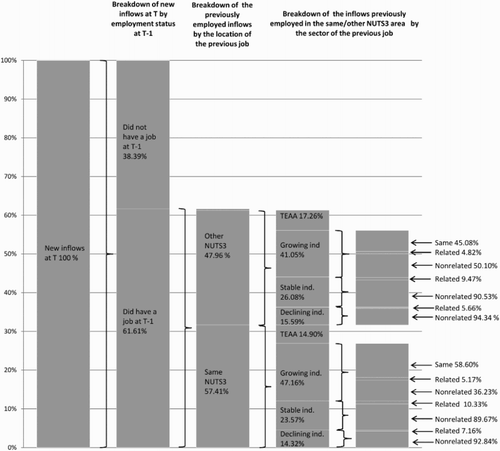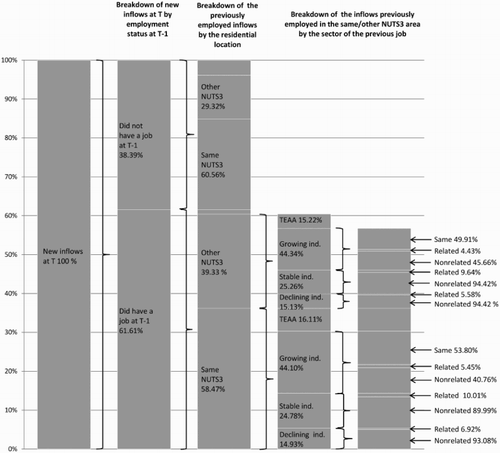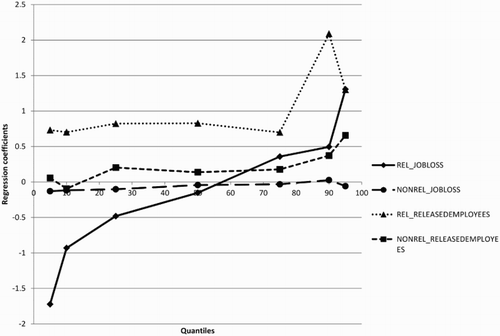Figures & data
Figure 1. Composition of the inflows of the most rapidly growing industries (in full-time equivalents – FTEs), 2007–11, by location and industry of the previous job. The job statuses are compared on 31 December of every year. Percentages refer to the previous category in the column on the left; TEAA refers to NACE rev. 2 category 78.2 Temporary employment agency activities. Unlabelled sections refer to inflows for which a value is unknown.

Figure 2. Composition of the inflows of the most rapidly growing industries (in full-time equivalents – FTEs), 2007–11, by employees’ residential location and the industry of the previous job. The job statuses are compared on 31 December of every year. Percentages refer to the previous category in the column on the left; TEAA refers to NACE rev. 2 category 78.2 Temporary employment agency activities. Unlabelled sections refer to inflows for which a value is unknown.

Table 1. Intraclass correlation (ICC) coefficients of the dependent variable across different dimensions of the panel for all industries, not weighted.
Table 2. Regressing employment growth in growing industries on the job loss and magnitude of released labour force in the region.
Figure 3. Quantile regression coefficients regressing employment growth in growing industries on the job loss and magnitude of released labour force in the region. All coefficients are statistically significant at least at 0.05 level (the standard errors are not clustered).

